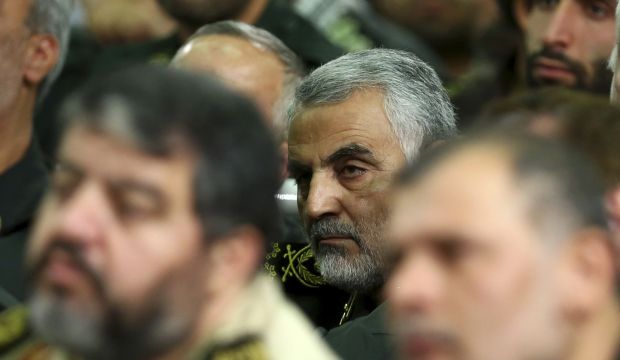At the same time it was revealed that Iran had decided to keep Gen. Qassem Suleimani away from the Iraqi file and instead assign to him the Syrian one, the president of Iraqi Kurdistan Region, Massoud Barzani, revealed that Tehran had provided the Kurdish forces with weapons and ammunition to face the Islamic State of Iraq and Syria (ISIS). How can one explain this decision?
It is clear that this step has many implications, one of which is Iran’s re-evaluation of its policy in Iraq. Yet this will not necessarily lead to a more positive outcome. Moreover, limiting Suleimani to the Syria file helps explain Iran’s view of the crisis there. Remarkably, Iran has supplied Iraq’s Kurds with weapons despite the disputes that existed between them and Tehran’s number-one man, Nuri Al-Maliki.
Moreover, the decision came despite Iran’s fears of Kurdish intentions to achieve further autonomy from Iraq, an ambition which poses a threat to Tehran, Ankara and Damascus. This means that Iran is adopting a new approach towards Iraq based on a more open policy towards not only Shi’ites, but also the Kurdistan Regional Government (KRG). The aim, of course, is to contain the Kurds.
Suleimani’s transfer to Syria proves his sectarian plan in Iraq has been a failure. Having realized that the battle in Iraq against ISIS was being fought by Sunnis, the US and the international community, Iran decided to invest in the battle by seeking a rapprochement with the Kurds. The sudden decision to arm the Kurds revealed how worried Iran was, but how flexible its decision-making can be as well. KRG President Barzani said: “Iran was the first country to supply us with weapons and ammunition.” That is, Tehran took the step of arming the Kurds before hesitant Washington and the busy Arabs.
Iran’s decision to move Suleimani to Syria clearly indicated that Tehran’s policy towards Syria and Iraq was going through a stage of re-positioning. Tasking him with the Syrian file meant that Suleimani had failed in Iraq and that Iran did not see a political solution in Syria for the time being, with its most important aim being to protect Syrian President Bashar Al-Assad militarily, particularly after losing Maliki.
Another important aspect is that Tehran is using the Houthis to heat up the situation in Yemen in order to place pressures on Saudi Arabia and the Arab Gulf states. All this indicates that now is the right time to move against ISIS in Syria and to strengthen the Free Syrian Army (FSA) by providing it with sophisticated weapons in order to take advantage of Iran’s confusion over the intersecting events in the region. The best example of the region’s chaotic situation is Iraq, where a Sunni uprising, ISIS’s terror activities and US intervention, are all taking place simultaneously.
Accordingly, if the US and the West seriously intervene in Syria to fight ISIS, and if the FSA receives true support in the form of sophisticated weapons, we will witness another Iranian re-positioning in Syria, which may result in the departure of Assad. What we should remember well is that Iran is good at escalating the situation, but retreats from confrontations. This is not to mention its mastery of the tactic of making concessions in the face of storms. Allocating the Syrian file to Suleimani is nothing but a re-positioning of Iranian policy.

Trackbacks/Pingbacks